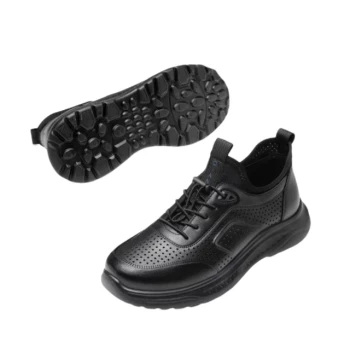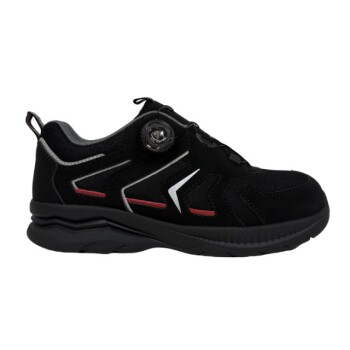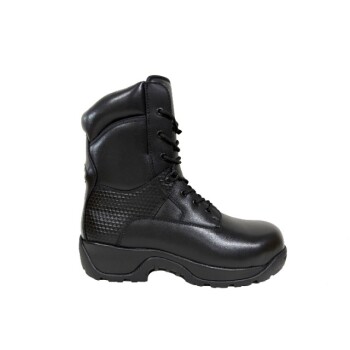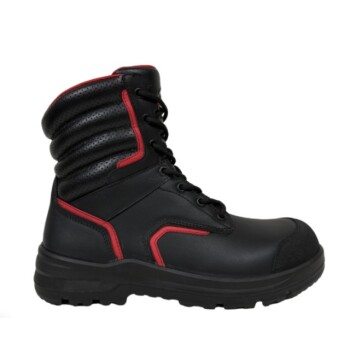The choice between vulcanized and cupsole shoes comes down to their fundamental construction methods. A vulcanized shoe's sole is heat-bonded to the upper for maximum flexibility and board feel, while a cupsole features a thicker, pre-molded sole that is stitched or glued on, prioritizing durability and impact absorption.
The core trade-off is simple: vulcanized construction excels in flexibility and ground-feel for technical control, whereas cupsole construction excels in cushioning and support for durability and high-impact situations.
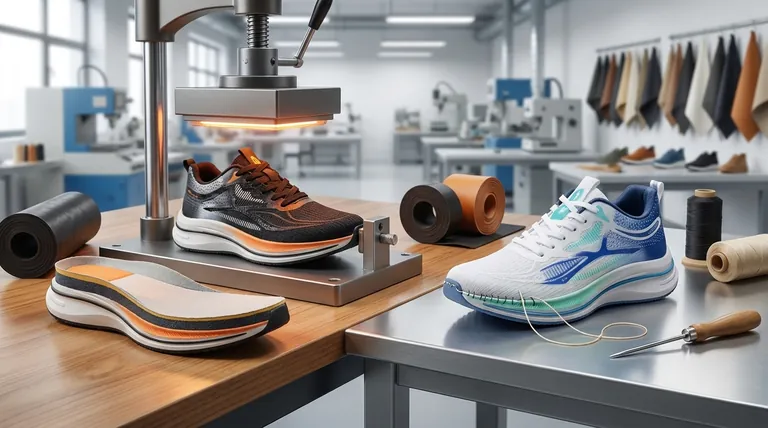
The Construction Difference: Heat vs. Stitch
The terms "vulcanized" and "cupsole" refer directly to how the rubber outsole is attached to the rest of the shoe. This single difference in manufacturing creates two distinct types of footwear with unique characteristics.
How a Vulcanized Sole is Made
A vulcanized shoe is built in a more fluid process. The shoe's upper is placed on a last, and a pliable rubber outsole is attached with adhesive. This assembly is then wrapped with a rubber strip, known as foxing tape, to seal the seam.
The entire shoe is then heated in a special oven, or autoclave. This heating process, called vulcanization, causes the rubber components to cure and harden, fusing them together and to the upper into a single, cohesive unit.
How a Cupsole is Made
A cupsole is named for its shape. The outsole is a pre-molded piece of durable rubber with raised sidewalls, forming a "cup" that the shoe's upper sits inside.
This one-piece sole unit is then attached to the upper, typically with strong cement, stitching, or a combination of both. This method allows for more complex sole designs and the inclusion of different materials for cushioning and support.
The Impact on Performance and Feel
The construction method directly translates to how the shoe performs on your foot, whether you're on a skateboard or walking down the street.
Board Feel and Flexibility (The Vulcanized Advantage)
Because the rubber is heated and fused, vulcanized soles are much thinner and more flexible. This allows your foot to feel the contours of the skateboard or the ground beneath you with greater precision.
This superior board feel is critical for technical skateboarding, where subtle foot adjustments determine the success of a trick. These shoes also require almost no break-in time.
Cushioning and Impact Protection (The Cupsole Advantage)
The thicker, pre-molded nature of a cupsole provides significantly more material between your foot and the ground. This results in better impact absorption and cushioning.
This is ideal for high-impact activities, like skateboarding down stairs or long sessions on your feet. The sturdier build provides a more protective barrier against hard landings.
Understanding the Trade-offs
Neither construction method is universally superior; each comes with a distinct set of compromises that makes it better suited for different applications.
The Durability Question
Cupsoles are generally more durable than their vulcanized counterparts. The thick, one-piece rubber cup and often-stitched construction can withstand more abrasion and repeated impact over time.
The foxing tape on a vulcanized shoe is a common point of failure, often wearing through quickly with abrasive activities.
Support and Stability
The "cup" structure of a cupsole naturally provides more support and stability for your foot. The raised sidewalls cradle the foot, reducing side-to-side roll.
Vulcanized shoes offer less inherent foot support due to their flat, flexible design, prioritizing feel over structure.
Weight and Break-in Time
Vulcanized shoes are typically lighter and more flexible right out of the box. They feel comfortable and ready to perform almost immediately.
Cupsoles tend to be slightly heavier and can feel stiffer at first, often requiring a short break-in period to achieve full flexibility.
Making the Right Choice for Your Goal
Your ideal shoe depends entirely on what you prioritize for your specific activity.
- If your primary focus is technical control and board feel: Choose a vulcanized shoe for its unmatched flexibility and direct connection to your board.
- If your primary focus is impact protection and durability: A cupsole will provide the cushioning and robust construction needed for high-impact landings and longer shoe life.
- If your primary focus is all-day comfort and casual wear: A modern cupsole often offers a superior balance of support and cushioning for extended periods of walking or standing.
Understanding this fundamental difference in construction empowers you to choose the right tool for your specific needs.
Summary Table:
| Feature | Vulcanized Sole | Cupsole |
|---|---|---|
| Construction | Heat-fused with foxing tape | Pre-molded 'cup' stitched/glued on |
| Flexibility | Superior, thin & flexible | Stiffer, requires break-in |
| Board Feel | Excellent, direct ground contact | Reduced, more cushioned |
| Durability | Lower (foxing tape wears) | Higher (thick, one-piece sole) |
| Impact Protection | Lower | Superior, ideal for high-impact |
| Best For | Technical control, skateboarding | Durability, comfort, all-day wear |
Need High-Quality Footwear for Your Market?
As a large-scale manufacturer, 3515 produces a comprehensive range of vulcanized and cupsole footwear for distributors, brand owners, and bulk clients. Our production capabilities encompass all types of shoes and boots, ensuring you get the right construction, durability, and performance for your customers' needs.
Let's discuss your specific requirements: Contact our team today to explore how we can support your business with reliable, high-volume manufacturing.
Visual Guide
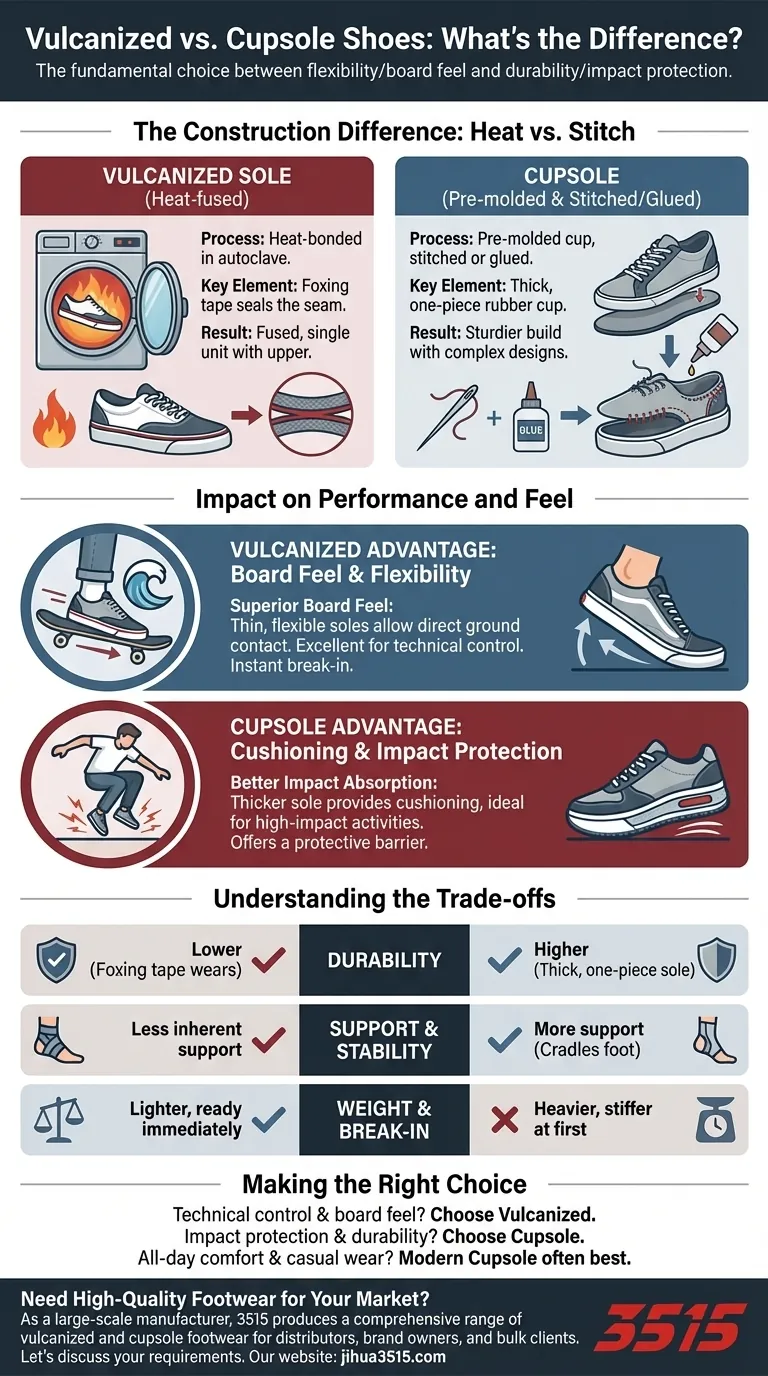
Related Products
- Wholesale Breathable Athletic Sneakers - Custom Lightweight Cushioned Footwear Manufacturer
- Safety Footwear Wholesale Manufacturer for Custom OEM/ODM Production
- Lightweight Breathable Sneakers with Wet-Traction Grip for Wholesale & Private Label
- Wholesale Durable Camo Canvas Shoes with High-Traction Rubber Soles
- Premium Safety Shoes with Rotating Buckle Safety Sneakers
People Also Ask
- Why are running shoes and walking shoes not interchangeable? Avoid Injury with the Right Footwear
- What should be considered when choosing smart trainers for business casual? A Guide to Professional Style
- Why is it recommended to stick with the same shoe brand? Unlock Consistent Fit & Performance
- What materials are best for breathable walking shoes? Find Your Perfect Fit for All-Day Comfort
- What is high-tech 'air' mesh, and how is it used in footwear? The Key to Cool, Lightweight Shoes


